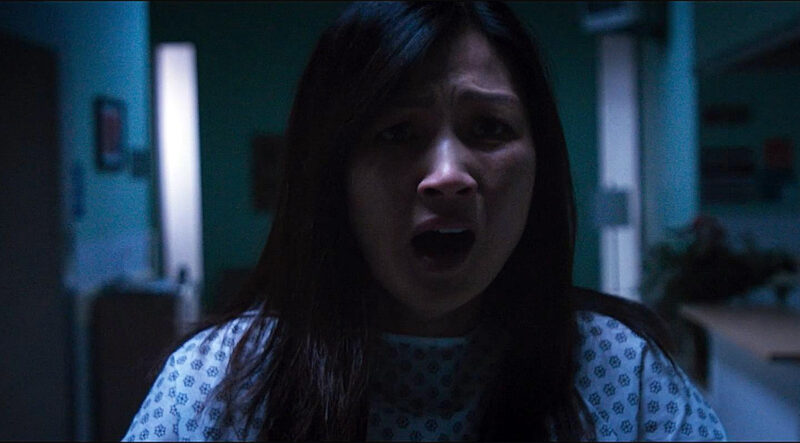They Live in the Grey
Directors: Abel and Burlee Vang
Cast: Michelle Krusiec, Ken Kirby, Ellen Wroe and Madelyn Grace
STANDOFF Pictures/Shudder
3.5/5
I remember having a conversation with an alleged medium once, where she equated her ability to that of Cole Sear in The Sixth Sense.
She saw dead people “all the time”.
It was neither gift nor a curse to her, mainly because she had accepted what she perceived she was. But it was unsettling, nonetheless.
I thought of her while watching They Live in the Grey, and I thought of the struggle people shrouding their ability, ensuring that the skeptical are not allowed to know and that the believers don’t exploit it.
In They Live in the Grey, we are introduced to social worker Claire Yang who is still grieving the loss of her son, killed in a hit and run accident. She’s pushed away her police officer husband, Peter, as she loses herself in grief.
She’s medicating. Shutting herself in and away from her sixth sense. But those who live in the grey still find her, reaching out to her, revealing their circumstances by coughing up black, viscous fluid, or holding themselves still staring, with the hospital gown wide open at the back.
By no means am I saying They Live in the Grey is on par with The Sixth Sense, but the themes are consistent with the two. What They Live in the Grey gets right is the sense of isolation mediums must feel as they are in that in-between state of communication between the living and the dead.
Yang takes on a case where a dark entity is haunting a family, one that has come under the watchful eye of family services. Yang has her baggage she brings into the investigation. The mother under the microscope alleges a spirit is causing the attacks on her daughter, but as the story progresses, you begin to piece together the message being delivered by the entity.
Now, if we believe that ghosts are people who have not let go of their mortal pain or have unfinished business — pure Victorian romanticism — then they are stuck in limbo. The grey as it were.
All it took for Yang to accept that she can communicate with those in limbo was to listen to spirits share their tales. But not without bumps and bruises along the way. She ends up in the hospital, and the catalyst that led her to accept who she is was the experience she had with an elderly roommate who shares her woes. After a trip to the bathroom sends her running through the labyrinthine hospital walls, she returns to her room to see her roommate standing longingly at the window.
The lady’s son was supposed to pick her up. But she’s standing there without the oxygen tank. Yang convinces her to not wait for her son and go. Her roommate complies and Yang is free of her spirit.
This acceptance allows her to move in from her grieving and self-isolation from her husband.
Discoveries often lead to the parting of old ways. Yang is let go from her job as a social worker, as she took too long to close out her work on the haunted family. Much like any Victorian ghost story, the haunted protagonist realizes the true intentions of the spirit.
With the case solved in Yang’s eyes, she confesses to her estranged husband that she has an ability. And the film ends with Yang sitting with a couple sharing the story of their matriarch still lingering behind after her death.
It’s a film that feels genuine in its depiction of mediums, and its linear storyline doesn’t get tied into the side spirits that enter Yang’s line of sight.
Photo courtesy of Shudder

